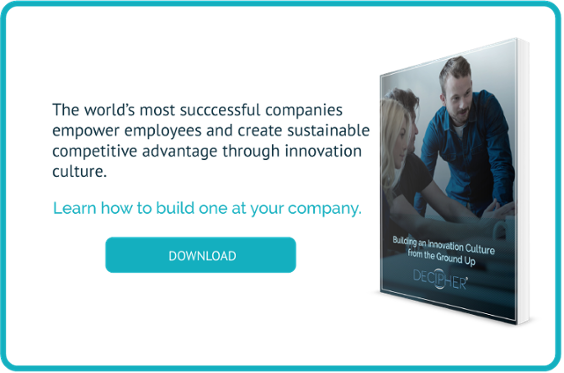An innovation ecosystem is a network of stakeholders collaborating together in order to increase opportunity and innovation to benefit the whole, instead of its parts. Startup incubators, for example, can be seen as a small-scale innovation ecosystem, since their creation is usually a means for fledgling companies to share ideas and learn best practices from experts, in order to magnify the chance of their success. Over the years, innovation ecosystems have become more apparent due to technology’s enhanced ability to support collaboration globally. Successfully innovative organizations have learned to reap the benefits of innovation ecosystems to improve their own individual success and the success of their markets.
Why should your organization partic ipate in innovation ecosystems?
ipate in innovation ecosystems?
The collaboration between the network of stakeholders holds many benefits for organizations. First, collaborative innovation allows every stakeholder to glean pieces of shared knowledge, work, and to some degree, costs. This allows the ecosystem to more effectively solve customer problems of higher complexity, leading to offerings which have greater valuable to the customer and thus, generating more demand. Participating stakeholders benefit from that demand in the form of revenue and a healthy market. Ultimately on a macro level, innovation ecosystems build a cycle of benefits which supports and benefits every stakeholder.
How to get started
Successful innovation ecosystems involves participation from a number of different stakeholders, namely employees, customers, partners or suppliers, competitors, and the general public. The variety of stakeholder participation has implications to your tactical approach to innovation ecosystems.
Processes
Your organization will need to build internal processes to tactically support collaborative innovation. This may include creating systems to manage an influx of ideas and to share them amongst stakeholders. It can also involve creating meetings, contracts, or guidelines between stakeholders. Tools and technology to support innovation, like databases, design programs, or trainings, are also included in process. Additionally, your organization may need to evaluate is staffing plan to evaluate the need to hire innovation focused roles.
Mindset Shift
One of the biggest hurdles to overcome when considering taking advantage of innovation ecosystems is shifting the organization mindset from singularly-focused to collaboratively-focused. In many instances, companies which may have previously been competitors will now be partners. Collaborative innovation is a two-way street concerned with expanding opportunity for the whole, so your organization may not always be opportunistic.
Championship
Corresponding with the organizational mindset shift, your company will need to create buy-in by championing collaborative innovation. Internally this includes top-down leadership involvement and creating a strategy for motivating employees to innovate, potentially with inventor incentive programs or other tactics. External championship is required as well to promote the values of the innovation ecosystem.
Impacts on intellectual property
One big question organizations must answer when working in an innovation ecosystem is: what happens to intellectual property assets? No doubt the management of intellectual property becomes more challenging, but on the whole, collaborative innovation enables opportunity for companies to use intellectual property assets more creatively. In some instances, it could mean sharing all or parts of your patent portfolios, as Elon Musk did when he opened Tesla’s patents for public use. It also presents licensing opportunities for stakeholders within the ecosystem. One key to navigating intellectual property management within innovation ecosystems is the understanding that intellectual property allowances may change from stakeholder to stakeholder, and it’s not a one-size-fits-all strategy.
Innovation ecosystems provide valuable benefits to participating organizations, the customers the serve, and the markets in general. Taking advantage of the benefits of an innovation ecosystem can provide new strategic opportunities for your organization, but it can also come with tactical challenges like managing intellectual property assets and creating internal buy-in by building an innovation culture. For best practices on creating an innovation culture at your organization, download this free ebook.

 ipate in innovation ecosystems?
ipate in innovation ecosystems?
